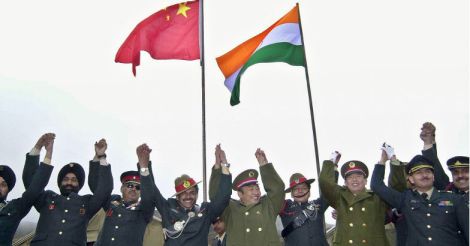The current asymmetry in power is evident: our economy –and our defence budget – are about 21% that of China ; and we have little comparable to the infrastructure China has built close to our border in Tibet. Our trade deficit with China is massive as China's exports to us are five times its imports from India.
Our approach will have to be calibrated , trying to optimize our strengths through careful management of resources, building alliances, and avoiding engagements in areas where the power imbalance places us at a disadvantage. We would of course need to pursue the policy line, that there are areas of both competition and of complementarity between China and India.
Chinese investments ,and infrastructure capacities in particular, could be useful to help speed up growth in India. We can increase export opportunities in goods and services as China’s economy diversifies; and scientific and cultural cooperation can continue to be beneficial. But we have to be conscious of some realities about China and its attitude towards India.
The first is that China has given up the policy dictum of Deng Xiao Ping: “hide our capabilities, bide our time and “Tao guang yang hui” (Be good at maintaining a low profile).
Also read: The Chinese challenge
Since the 2008 economic crisis which weakened the West, China is conscious of its increased weight in world affairs, and that it seems on course to becoming the world’s largest economy. Under President Xi, China's slogan has changed from Peaceful Rise of China to “ Great Resurgence of the Chinese Nation”.
The second is that today China sees only the US as an equal, and is less interested in a “ multipolar” world.
President Xi’s 2014 call for a “New Type of Great Power Relations”, is in practice an argument to the US for a G-2 to manage world affairs. While in the 16th century China acknowledged India’s cultural contribution to its own civilization (the oft cited book, Journey to the West, is a tale of a monk travelling back to China with Buddhist wisdom from India) , it does not see us in the same league today.
(Evident from its negative attitude towards our claim for a Permanent seat in the UN Security Council).
And China will continue to bolster Pakistan and its military, to keep India tied down within the confines of South Asia. That explains why it took the risk of supporting Pakistan’s nuclear weapons program, and why it is willing to stand alone to block UN listing of Hafiz Saeed as a proscribed terrorist . We should have no illusions that China’s greater interest in investments and trade with India will change the Chinese political priority for Pakistan . For the Chinese Communist Party (CCP), politics will always be “in command”.
A third is that China’s dramatic economic growth is unlikely to be sustainable.
In 2007 former PM Wen Ji Bao told the National People’s Congress that China’s biggest economic problem was that growth is “unstable, imbalanced uncoordinated, and unsustainable”.
His solution was to shift from an investment based economy to a consumption and domestic demand driven economy. But China responded to the 2008 economic crisis with a $600 billion stimulus –which again led to an investment boom by government-owned enterprises in the same manufacturing and infrastructure sectors that were making the economy unsustainable.
Sorting out the mess this created in terms of bad loans, and NPAs has put greater pressure on the banking system today. Talk of a “coming crash” in China seems exaggerated, but some correction and slowdown cannot be ruled out.
Even with a slowdown, China will be one of the world’s largest economies. China’s rebalancing has focused not only on domestic demand but on increasing capital investment abroad. This creates opportunities for developing countries including India to obtain critical infrastructure investment .
Which is why we supported and joined the Chinese launched Asian Infrastructure Investment Bank. The One Belt One Road (OBOR )project launched by President Xi in 2013-4 is ,however, a somewhat different story.
This is a truly massive infrastructure ,transport and trade initiative for investment in Asia, the Indian ocean and maritime regions connecting China, and Europe.
The CPEC, which will drive through POK, is part of this scheme. The projects for the maritime element of the OBOR envisage investment in strategic areas of the Maldives, Sri Lanka and other Indian Ocean countries. We might view some of these as threats, but will find it hard to match the Chinese offers with our own .
Whether the efforts at home and abroad solve China’s economic problems remains to be seen.
Growth is slowing and negative credit ratings are beginning to be seen. President Xi’s anti-corruption drive, and his concentration of powers in his own hands has begun to face internal challenges in the CCP, and from the armed forces.
The earlier de-emphasis of ideology, during the heyday of growth, caused insecurity among the CCP cadres -- which was assuaged with nationalism and economic performance.
If the real economy now slows, then the leadership will fall back even more on nationalism as a unifying principle.
The US Presidential election will determine how the global response develops, but India will need to be determined and sagacious in dealing with the challenge of China.
While the outside world can help, only we can speed our own economic growth and development, and reduce the economic and military imbalance.
The US pivot to Asia and trilateral cooperation including Japan, are essentially maritime strategies that could be useful for us in the oceans; but we have to deal with the Sino-Pak axis, and manage our land boundary with China, on our own.

























